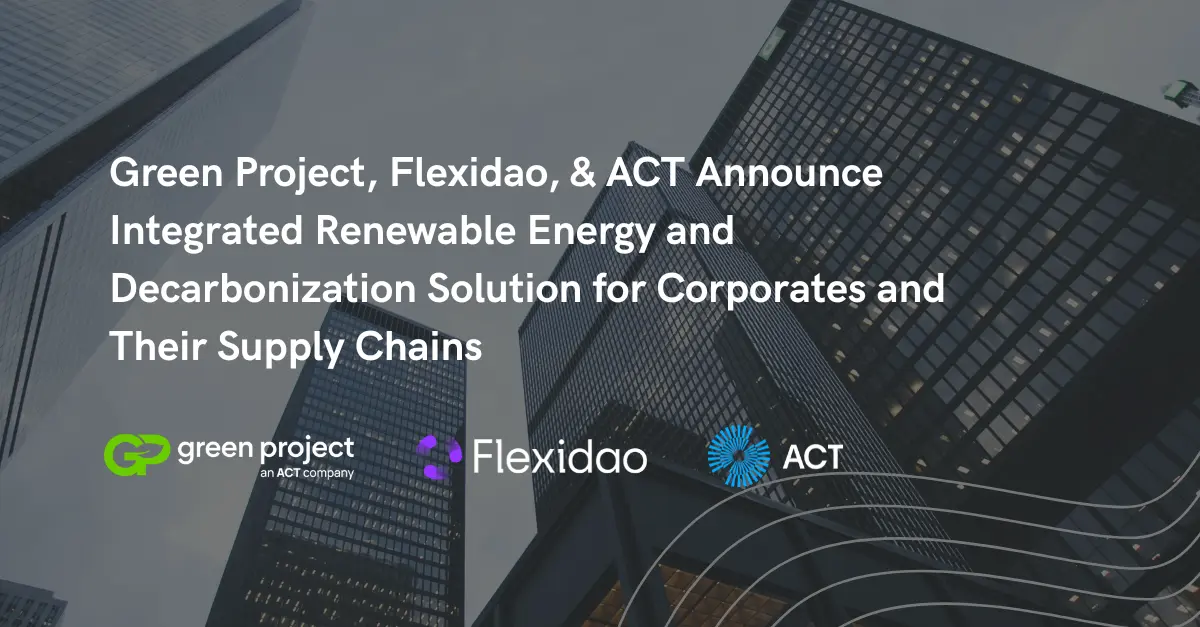How to Create A Sustainability Report of Your Renewable Energy
How to Create A Sustainability Report of Your Renewable Energy
Guide to creating comprehensive sustainability reports for renewable energy using advanced energy management platforms.
Sustainability reporting has become a mainstay in the annual reporting requirements for many companies. Historically, the need for reporting has arisen through compliance with company reporting regulations, such as in the United Kingdom, where large companies are mandated to report on carbon each year. More recently, climate conscious companies have also taken to voluntary reporting, for example under the Carbon Disclosure Project (CDP) framework. Whatever the driver is for sustainability reporting, it’s clear that having a sustainability report is something that will remain important and become even more important in the future.
What is a Sustainability Report and Why is it Important
According to GRI, a sustainability report is a report published by a company about the economic, environmental, and social impacts caused by its everyday activities. The topics discussed in a sustainability report can vary greatly. A typical report covers carbon emissions, energy usage, water usage, waste production, and recycling. In the next section, the energy usage aspect of reporting, and more specifically, the levels of renewable energy used within a company will be discussed.
Reporting on renewable energy in sustainable reporting is an important topic. This is due to many factors but the primary reason is that renewable energy has been identified as a key metric when assessing a company's contribution to tackling climate change. According to the latest Eurostat figures, over three-quarters of the GHG emissions in the EU-27 are due to fuel combustion alone. Whilst water and waste reduction etc. are important for a company’s sustainable development, it's clear that renewable energy is the key solution to large scale emissions reductions.
The latest annual report from RE100 – an initiative which strives to facilitate the achievement of 100% renewable energy – shows the extent of the growth in popularity of renewable energy reporting and targets.

There has been exponential growth in the number of companies signing up to these standards. Companies run the risk of reputational damage if they’re not seen to be joining initiatives like RE100 and creating targets for renewable energy. The same level of public scrutiny isn’t applied to waste reduction or water usage, for example.
Therefore, it’s vital for a company that is currently not reporting on renewable energy to take action and create a strategy to achieve high-levels of clean energy usage. To create a sustainability report on renewable energy, a company has a range of options to choose from.
How to Create a Sustainability Report
A company could choose to create their own in-house sustainability report and decide what information they choose to analyze and highlight in the report. Another option would be to sign up to a voluntary sustainability reporting framework such as CDP or GRI. These frameworks have developed around the GHG Protocol guidance from the World Resources Institute (WRI). They have a very structured set of sustainability-related questions and data requirements. A benefit of complying with sustainability reporting standards, such as the CDP, is that companies are scored on an annual basis. This allows a company to measure their progress and compare sustainability performance with competitors.
Committing to CDP or GRI reporting on an annual basis requires a significant amount of work and company resources. The reports typically require input from a vast array of different stakeholders within an organization. It’s a daunting task for a company just beginning their sustainability reporting journey. Thus, it’s best practice to start by creating an in-house sustainability report and gradually progress to submitting to reporting frameworks when data has been properly tracked and verified.
How to Effectively Report On Renewable Energy
Let’s look at the steps a company with no sustainability report could take to effectively report on their renewable energy.
Step 1 – Identify where energy is being used directly in the organization. This requires an understanding of what fuels are used within the company. For example, a plant could use electricity, gas, fuel oil etc. in the production process. This will need to be completed for all geographical locations.
Step 2 – Once energy use has been identified, the next step is to retrieve data on total annual volumes used and the associated carbon emissions with each fuel. This can be a very difficult exercise if the company uses many different energy types in a number of different countries.
To dive deeper, this step can be broken down to the following sub-steps focusing on electricity and gas use as examples:
- For electricity, a review of where the electricity is sourced will need to be completed. This can be through options such as on-site generation, green certificates, green tariffs or Power Purchase Agreement (PPAs). The zero carbon content of on-site renewables or a PPA is quite straightforward to quantify. The carbon content of a supply contract can be more difficult to obtain. A sustainability manager will need to contact suppliers for specific information on the carbon content of their electricity supply.
- For gas, it’s generally the case to request the carbon content of the gas from suppliers. This can vary slightly by region due to the quality of the gas supplied. Some companies will generate biogas on-site and purchase green gas certificates, but in general, these aren’t as common as on-site electricity generation or certificates.
Step 3 – The next step is to take this data, analyze it, and present it in a meaningful manner. The good news is that once data is collected and verified, the hard part is complete. This should be presented in such a way that it’s easy for both internal and external stakeholders to understand and interpret.

Step 4 – The final step of sustainability reporting is recognizing the results of the report and creating a strategy with specific targets for future years. Setting targets will help leadership and employees understand what is required to achieve those targets, both in terms of financial budgets for projects and the human resources required to take those projects to completion.
It goes without saying that collecting this information and presenting it accurately can be an arduous task. There are many different points of stakeholder interaction which increases the risk of human error in the provision or analysis of data. In addition to this, for a company, this data gathering exercise can be a massive drain on resources. If you don’t have a central sustainability team, the time spent by operations managers, energy managers, engineers, senior leadership etc. in assisting with sustainability reporting detracts from the company’s core business and targets.
Take the example of an operations manager at a pharmaceutical plant. His/Her day-to-day objectives are to keep the plant operating effectively and efficiently, responding to equipment breakdowns, and managing the expectations of the leadership team. Helping to collect data from energy suppliers or downloading on-site generation statistics from metering software shouldn’t be a requirement of the job. It’s an unnecessary distraction from their singular objective, to ensure the plant is operating as profitably as it can at any given moment. This needs to change to allow employees to re-focus on their core accountabilities.
Automating your Sustainability Reporting
The good news is that getting data for sustainability reporting is getting easier. There are now many digital tools available that can automate different aspects of it. These tools can help with data collection, data cleansing, data analysis etc. and can range from the very basic such as a web interface linked to a plant generation sub-meter to more advanced forms of energy digitization through the use of blockchain technology.
Flexidao’s platform is one such example, where we use the latest technology to meet the needs of our customers. Our platform has been designed to take the hassle out of the renewable energy side of sustainability reporting and provide a medium for effective presentation of data. First of all, we gather, process and display in a dashboard all the data regarding your renewable energy procurement. All your Energy Attribute Certificates are centrally collected and aggregated; additional information over the source of the certificate that are relevant for reporting purposes are disclosed, such as type of renewable energy used, age and location of the plant, CO2 emitted and avoided.
Using our platform will free up time and budget for staff to concentrate on the core goals of the business and facilitate. the communication with, and work of, external auditors that’s needed for reporting purposes. Step 2 in your reporting journey, the most painful one, will become much easier, since you have ready to use energy data for any reporting purpose. Finally, your credibility will be enhanced by the blockchain application, which will act as a digital auditor for all your energy data.
Sustainability reporting will continue to grow, expand its horizons and reach. With increasing interest in Environmental, Social and Corporate Governance (ESG) investing, its possible a company’s sustainability report in the future could be scrutinized in the same way as annual financial reporting is today. For this reason and others, it's vital for companies to take control of their sustainability reporting now to ensure smooth alignment with the ongoing green energy transition.


.webp)





